Implementing Fixed Function TexGen in Shaders
Before Unity 5, texture properties could have options inside the
curly brace block, e.g. TexGen CubeReflect. These were controlling fixed function
texture coordinate generation. This functionality was removed in Unity 5.0; if you need
texgen you should write a vertex shaderA program that runs on each vertex of a 3D model when the model is being rendered. More info
See in Glossary instead.
This page shows how to implement each of fixed function TexGen modes from Unity 4.
Cubemap reflection (TexGen CubeReflect)
TexGen CubeReflect is typically used for simple cubemapA collection of six square textures that can represent the reflections in an environment or the skybox drawn behind your geometry. The six squares form the faces of an imaginary cube that surrounds an object; each face represents the view along the directions of the world axes (up, down, left, right, forward and back). More info
See in Glossary reflections.
It reflects view direction along the normal in view space, and uses that as the UV
coordinate.
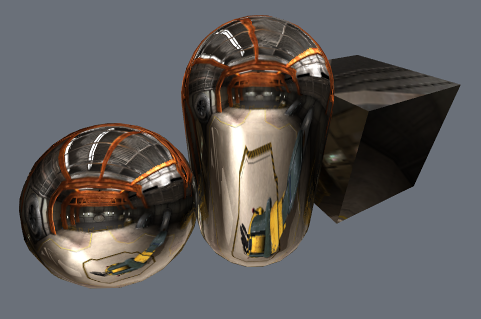
Shader "TexGen/CubeReflect" {
Properties {
_Cube ("Cubemap", Cube) = "" { /* used to be TexGen CubeReflect */ }
}
SubShader {
Pass {
CGPROGRAM
#pragma vertex vert
#pragma fragment frag
#include "UnityCG.cginc"
struct v2f {
float4 pos : SV_POSITION;
float3 uv : TEXCOORD0;
};
v2f vert (float4 v : POSITION, float3 n : NORMAL)
{
v2f o;
o.pos = UnityObjectToClipPos(v);
// TexGen CubeReflect:
// reflect view direction along the normal,
// in view space
float3 viewDir = normalize(ObjSpaceViewDir(v));
o.uv = reflect(-viewDir, n);
o.uv = mul(UNITY_MATRIX_MV, float4(o.uv,0));
return o;
}
samplerCUBE _Cube;
half4 frag (v2f i) : SV_Target
{
return texCUBE(_Cube, i.uv);
}
ENDCG
}
}
}
Cubemap normal (TexGen CubeNormal)
TexGen CubeNormal is typically used with cubemaps too.
It uses view space normal as the UV coordinate.
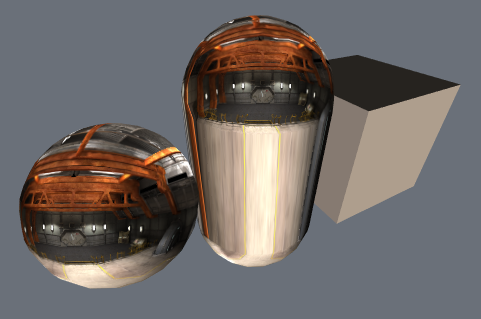
Shader "TexGen/CubeNormal" {
Properties {
_Cube ("Cubemap", Cube) = "" { /* used to be TexGen CubeNormal */ }
}
SubShader {
Pass {
CGPROGRAM
#pragma vertex vert
#pragma fragment frag
#include "UnityCG.cginc"
struct v2f {
float4 pos : SV_POSITION;
float3 uv : TEXCOORD0;
};
v2f vert (float4 v : POSITION, float3 n : NORMAL)
{
v2f o;
o.pos = UnityObjectToClipPos(v);
// TexGen CubeNormal:
// use view space normal of the object
o.uv = mul((float3x3)UNITY_MATRIX_IT_MV, n);
return o;
}
samplerCUBE _Cube;
half4 frag (v2f i) : SV_Target
{
return texCUBE(_Cube, i.uv);
}
ENDCG
}
}
}
Object space coordinates (TexGen ObjectLinear)
TexGen ObjectLinear used object space vertex position as UV coordinate.
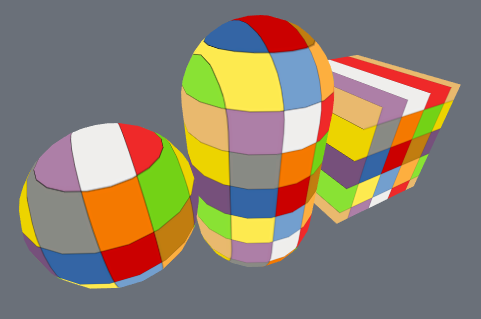
Shader "TexGen/ObjectLinear" {
Properties {
_MainTex ("Texture", 2D) = "" { /* used to be TexGen ObjectLinear */ }
}
SubShader {
Pass {
CGPROGRAM
#pragma vertex vert
#pragma fragment frag
#include "UnityCG.cginc"
struct v2f {
float4 pos : SV_POSITION;
float3 uv : TEXCOORD0;
};
v2f vert (float4 v : POSITION)
{
v2f o;
o.pos = UnityObjectToClipPos(v);
// TexGen ObjectLinear:
// use object space vertex position
o.uv = v.xyz;
return o;
}
sampler2D _MainTex;
half4 frag (v2f i) : SV_Target
{
return tex2D(_MainTex, i.uv.xy);
}
ENDCG
}
}
}
View space coordinates (TexGen EyeLinear)
TexGen EyeLinear used view space vertex position as UV coordinate.
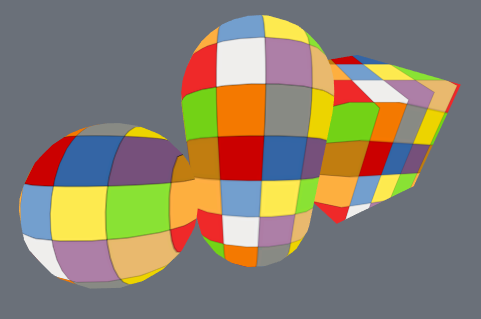
Shader "TexGen/EyeLinear" {
Properties {
_MainTex ("Texture", 2D) = "" { /* used to be TexGen EyeLinear */ }
}
SubShader {
Pass {
CGPROGRAM
#pragma vertex vert
#pragma fragment frag
#include "UnityCG.cginc"
struct v2f {
float4 pos : SV_POSITION;
float3 uv : TEXCOORD0;
};
v2f vert (float4 v : POSITION)
{
v2f o;
o.pos = UnityObjectToClipPos(v);
// TexGen EyeLinear:
// use view space vertex position
o.uv = UnityObjectToViewPos(v);
return o;
}
sampler2D _MainTex;
half4 frag (v2f i) : SV_Target
{
return tex2D(_MainTex, i.uv.xy);
}
ENDCG
}
}
}
Spherical environment mapping (TexGen SphereMap)
TexGen SphereMap computes UV coordinates for spherical environment mapping.
See OpenGL TexGen reference for the formula.
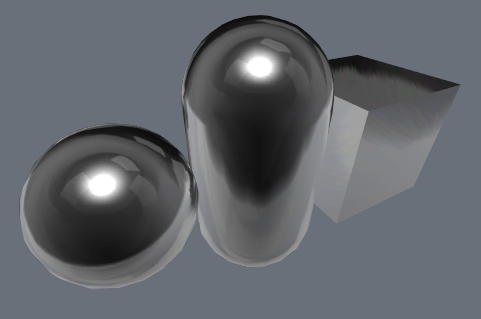
Shader "TexGen/SphereMap" {
Properties {
_MainTex ("Texture", 2D) = "" { /* used to be TexGen SphereMap */ }
}
SubShader {
Pass {
CGPROGRAM
#pragma vertex vert
#pragma fragment frag
#include "UnityCG.cginc"
struct v2f {
float4 pos : SV_POSITION;
float2 uv : TEXCOORD0;
};
v2f vert (float4 v : POSITION, float3 n : NORMAL)
{
v2f o;
o.pos = UnityObjectToClipPos(v);
// TexGen SphereMap
float3 viewDir = normalize(ObjSpaceViewDir(v));
float3 r = reflect(-viewDir, n);
r = mul((float3x3)UNITY_MATRIX_MV, r);
r.z += 1;
float m = 2 * length(r);
o.uv = r.xy / m + 0.5;
return o;
}
sampler2D _MainTex;
half4 frag (v2f i) : SV_Target
{
return tex2D(_MainTex, i.uv);
}
ENDCG
}
}
}